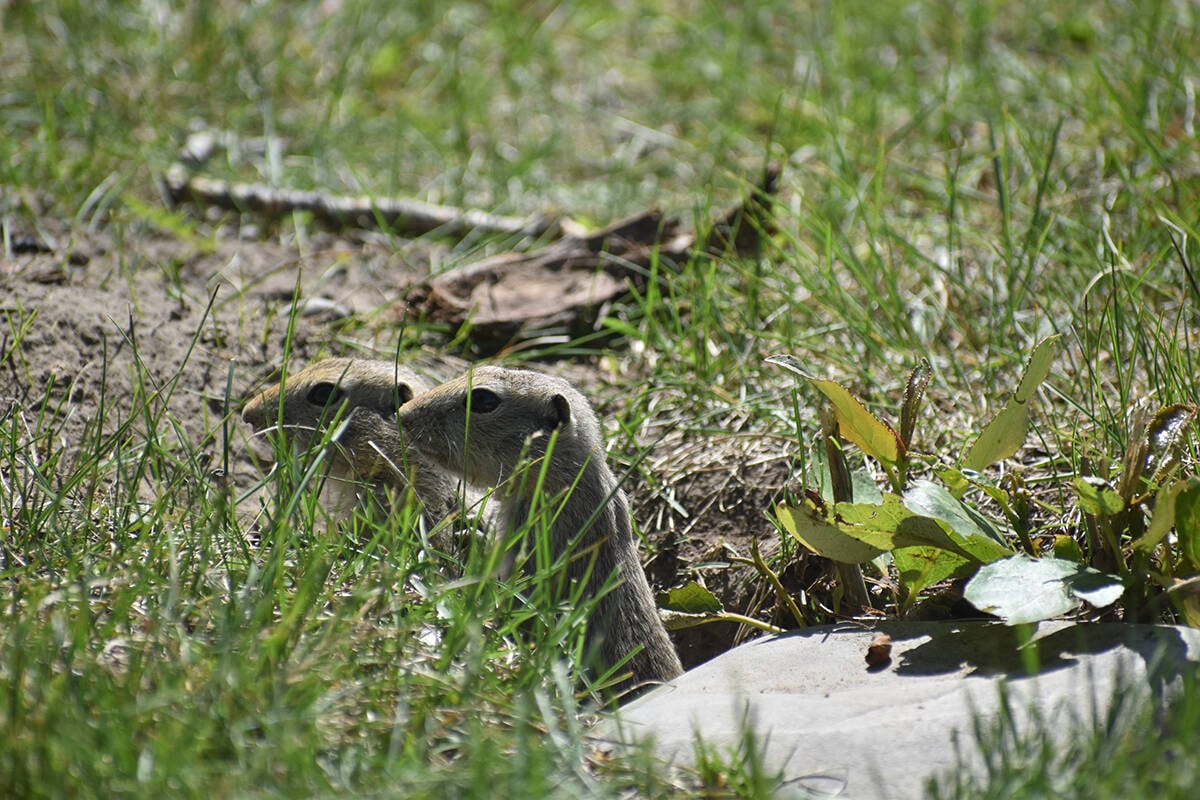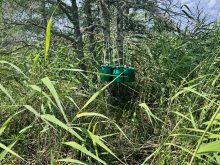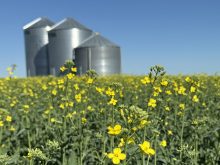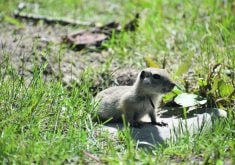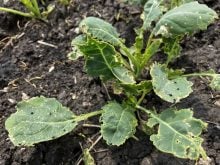Glacier FarmMedia – The Richardson’s ground squirrel has been a challenge for Prairie farmers for more than 100 years.
Climate and weather are major contributing factors for increasing gopher populations on the Prairies, said James Tansey, provincial insect and vertebrate pest management specialist with the Saskatchewan government.
Slow crop establishment last spring allowed more rodents to establish themselves farther into fields than Tansey had ever seen.
Read Also

Saskatchewan puts crown land auction on hold
Auctions of Saskatchewan crown lease land are once again on hold.
“Then you get a bit of feedback loop going because they don’t like vegetation over about 15 centimetres. They’re reducing the stand, increasing in numbers and increasing damage,” he said.
There has been talk of a gopher boom this year, but with experts expecting a warmer spring with adequate moisture, conditions should be less advantageous to gophers.
However, Tansey said they will still be keeping an eye on gopher numbers in Saskatchewan.
For scouting purposes, Tansey said 20 per cent damage to crops within a 100-metre walk or one to two active mounds within two strides indicate enough gophers to warrant control.
Farmers have been left with one less tool in their arsenal with the 2024 Health Canada ban on strychnine.
The Saskatchewan Association of Rural Municipalities is still pushing for the federal government to reverse the ban, saying other alternatives are not as effective for population control.
Records of gopher bounties and provincial holidays for gopher hunting go back to 1917, but a lot of research has gone into the effectiveness of predatory mammals and birds.
Foxes, weasels, snakes and badgers are efficient rodent hunters.
A single badger can drop a local population of gophers by at least 50 per cent in a season. If left unbothered, they’ll stick around in an area that has plenty to eat, said Tansey.
However, badger population counts have been all over the map, and there is concern for their numbers on the Prairies, said Melanie Dubois, senior riparian and biodiversity biologist with Agriculture Canada.
There have been programs to reduce coyote numbers, said Dubois, and the danger that coyotes pose to livestock herds is a valid concern for farmers and ranchers.
However, reducing predator numbers does mean an increase in pests such as gophers, she said.
While they are effective hunters on their own, coyotes and badgers increase their hunting efficiency when they work together, a partnership that has been documented in the Journal of Mammology as well as on film and game cameras.
Birds of prey, such as barn owls, ferruginous hawks and northern harriers, live on a steady diet of adult gophers and other small mammals during a season, said Tansey.
American kestrels are too small to take down adult gophers but thrive on juvenile gophers, as well as grasshoppers and other agricultural pests, he said.
Raptor platforms and nesting boxes can be a welcome and cost-effective addition to any pasture.
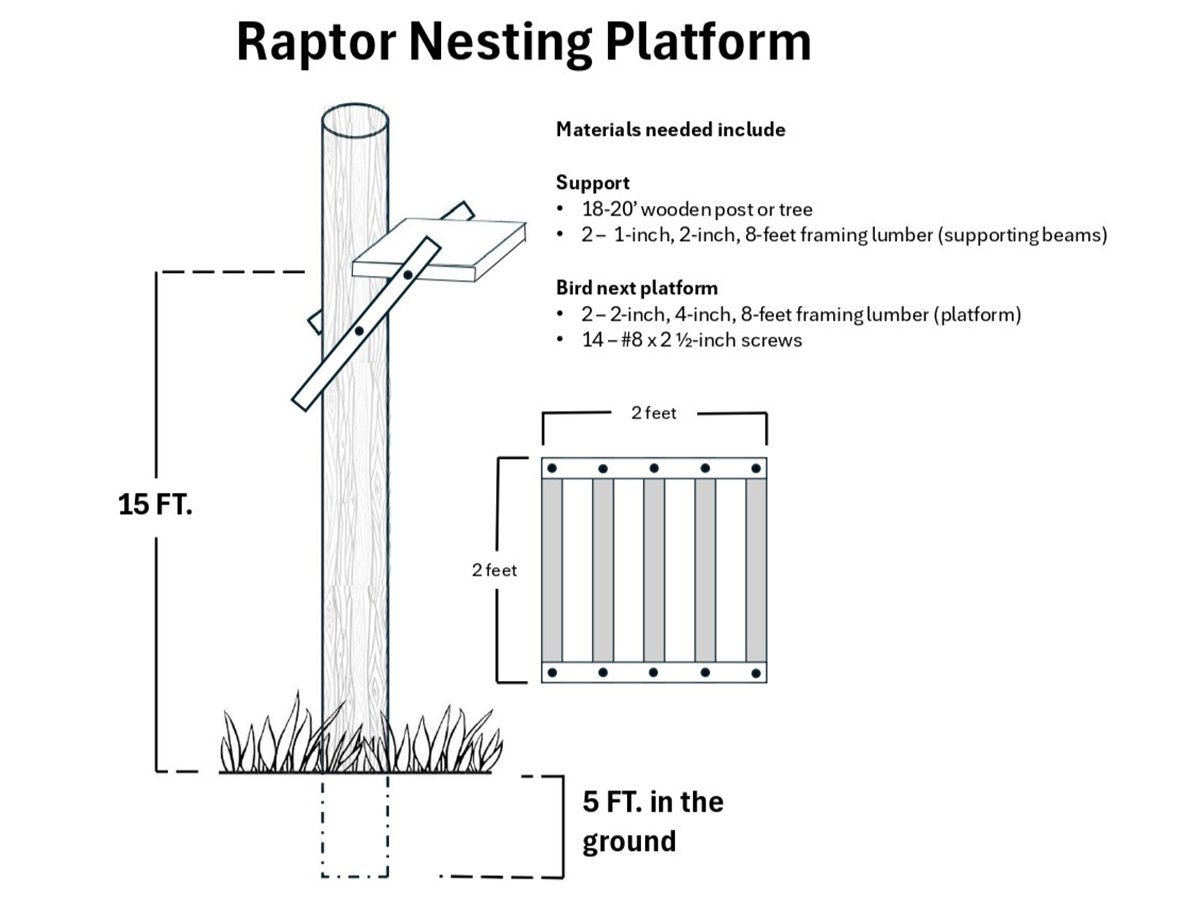
Manitoba Beef and Forage Initiatives has investigated many nature controls, said general manager Mary-Jane Orr, including ferruginous hawk nesting structures through a partnership with Land and Water Management and Assiniboine Community College.
According to the partnership’s final report, one ferruginous hawk pair can consume up to 500 gophers in a single breeding season, making areas with abundant gophers ideal for nesting structures.
The report also noted that ferruginous hawks have been on the endangered species list for the last 40 years.
SARM’s Gopher Control Program covers 50 per cent of the cost of ground squirrel population controls, including Richardson’s, Franklin’s, thirteen-lined and the northern pocket gopher. Registered chemical controls and materials for raptor boxes are eligible for the program.
Dubois has been analyzing various gopher controls, all of which cost time and money, she said.
“There are poisons that are still available, certain types of rodenticides that are out there. There’s trapping. There’s shooting,” she said.
The goal is not to eradicate gophers but to manage the damage done, said Tansey. It is a balancing act between integrating biological and cultural controls that work for farmers and their operations, he added.
Helping predators establish a home can provide free pest control, but there are some trade-offs. Badger holes can be just as destructive as gopher burrows, especially in pastureland, and some hawks also feed on songbirds and grouse.
“You’re creating habitat and biodiversity on the landscape, and that’s a huge positive,” said Orr.
“But there’s a balance point to finding how best to live with that diversity so that it’s not impacting your equipment and impacting your overall productivity.”
Tansey said there needs to be some tolerance of gophers and their predators in any management practice.
“If they’re not causing trouble, there’s no reason to control them.”

